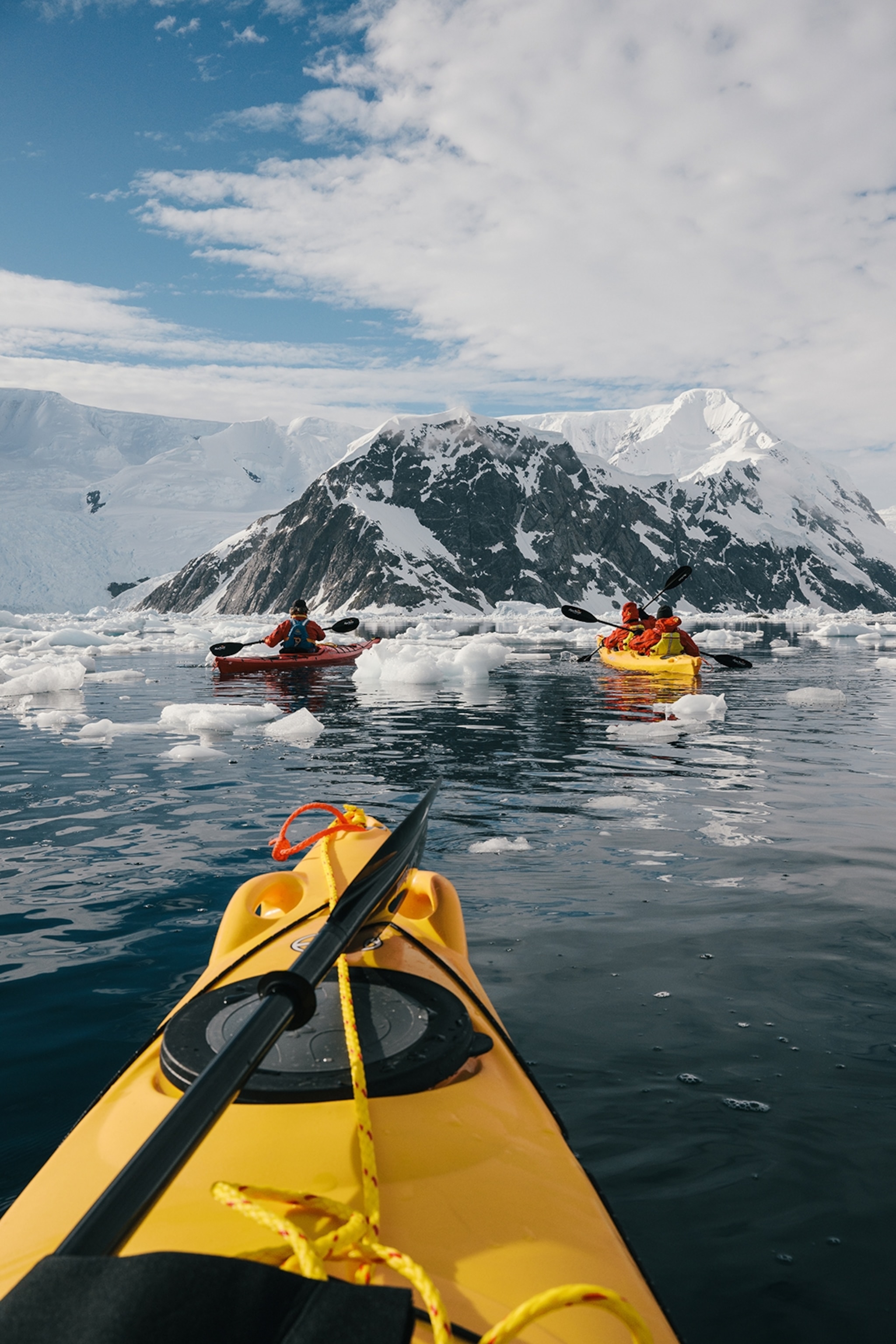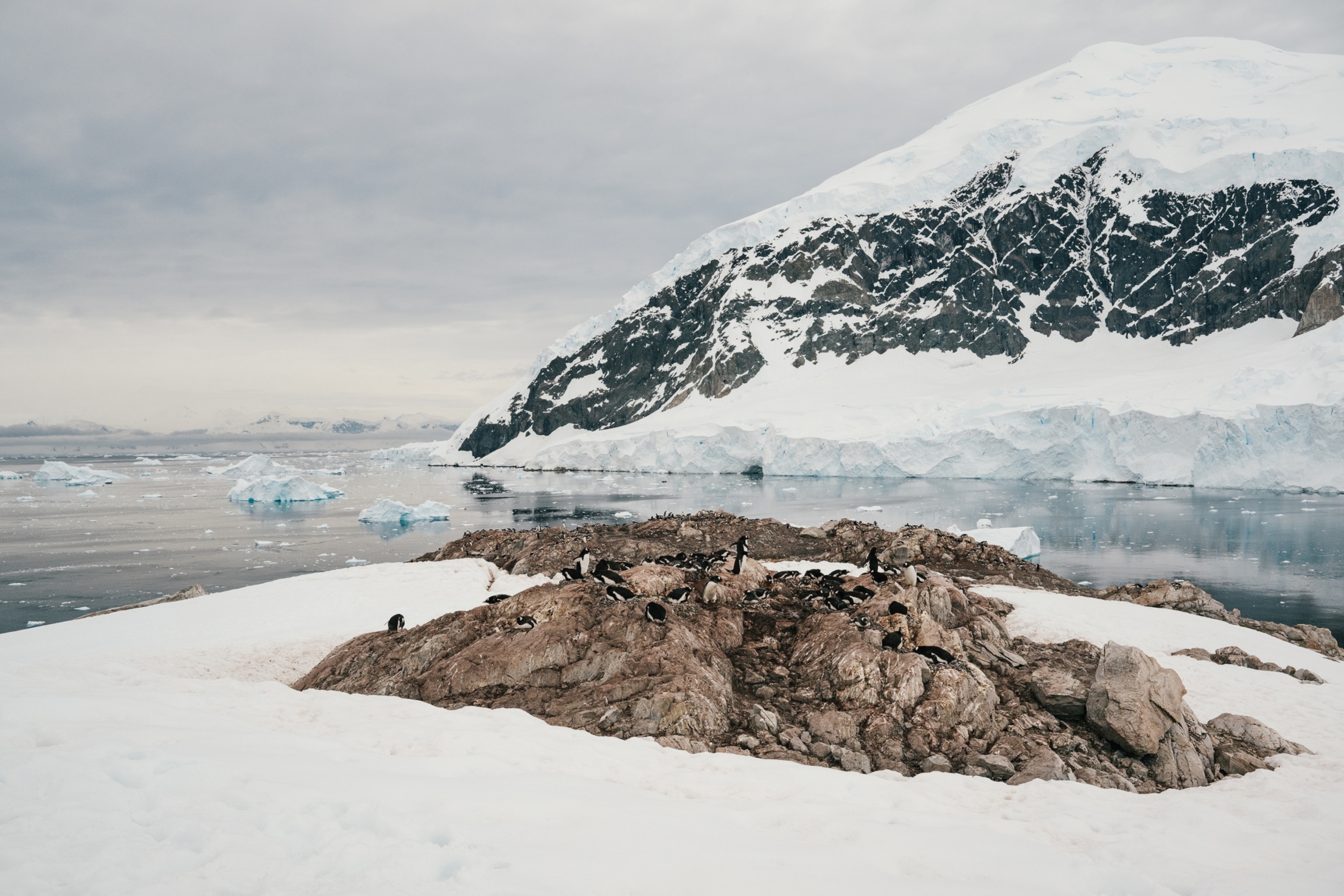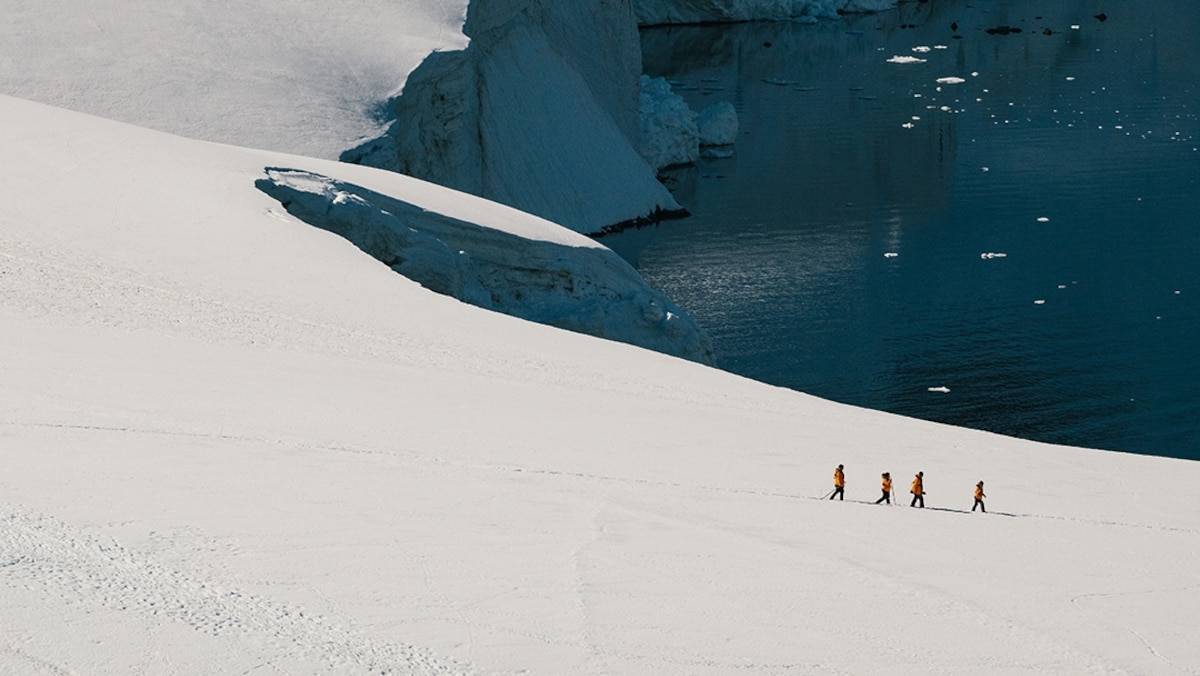Story and photographs by Matt Dutile April 30, 2024 This article was produced by National Geographic Traveller (UK).
Antarctica, an increasingly fragile land of barren shores lapped by bone-chilling waters, is a realm defined by every form of ice—in snow, glaciers, and colossal icebergs—and surprisingly, by a thriving array of wildlife.
Discovering Fragility and Endurance
Travellers journey to this inhospitable region at the southern end of the world to explore both the profound fragility and the remarkable endurance of life in its extreme conditions.

Watching Giants Pass
It’s easy to lose track of time on deck, captivated by the slow, majestic passing of giant icebergs or by the unexpected sight of penguin prints etched on the sea ice below. The adventure deepens with opportunities for closer encounters, whether kayaking amidst chunks of ice in locations like Neko Harbour or taking an inflatable Zodiac boat to shore, where Adélie penguins can be observed up close.

Masters of Adaptation: Antarctic Birds
Birds, perhaps more than any other animal, have demonstrably adapted and persevered in Antarctica. They breed, nest, and rear their young on barren rock formations. Some species, like the blue-eyed shag, are non-migratory and possess the remarkable ability to dive to extreme depths in search of food. The Antarctic skies and shores are also home to skua, gulls, albatross, and petrels, each a testament to life’s resilience in this harsh environment.

Penguin Rookeries and Icy Treks
Short hikes across expansive ice fields provide visitors with incredible vantage points to admire the vast rookeries. In Neko Harbour, for example, hundreds of gentoo penguins meticulously construct their nests from gathered rocks. While one parent diligently guards the nest, the other ventures out to sea to fish, occasionally pausing on ice floes to rest or evade predators.
First Steps on the Continent
Brown Bluff, situated at the very tip of the Tabarin Peninsula, marks the initial landing point on the Antarctic continent for most travellers. This dramatic landscape is home to approximately 20,000 breeding pairs of Adélie penguins, who make their nests on the rocky scree beneath imposing tuff cliffs, alongside several hundred gentoo penguins.
A Waving Chorus of Calls
Individual penguins often strategically hop to the highest rocks within the colony to survey their surroundings, trumpeting out distinctive calls that are soon echoed in a collective, waving chorus by their peers. They perform incredible, agile leaps from these rocky perches back into the bustling colony, then waddle off to reunite with their nearby mates.
The Golden Light of Midsummer

Deep within the continent, during the height of the Antarctic midsummer (between December and February), the sun never truly sets. Instead, it dips just below the horizon for a few hours as the day draws to a close, bathing the vast expanses of ice in a breathtaking palette of golden and pink light, illuminating them with warm, ethereal colours.
Distant Encounters
The silhouettes of other visitors to this remote region may occasionally emerge between distant icebergs—perhaps the outline of an expedition vessel carrying 150 to 200 passengers, or the graceful mast of a sailing boat with just a few dozen adventurers on board.




